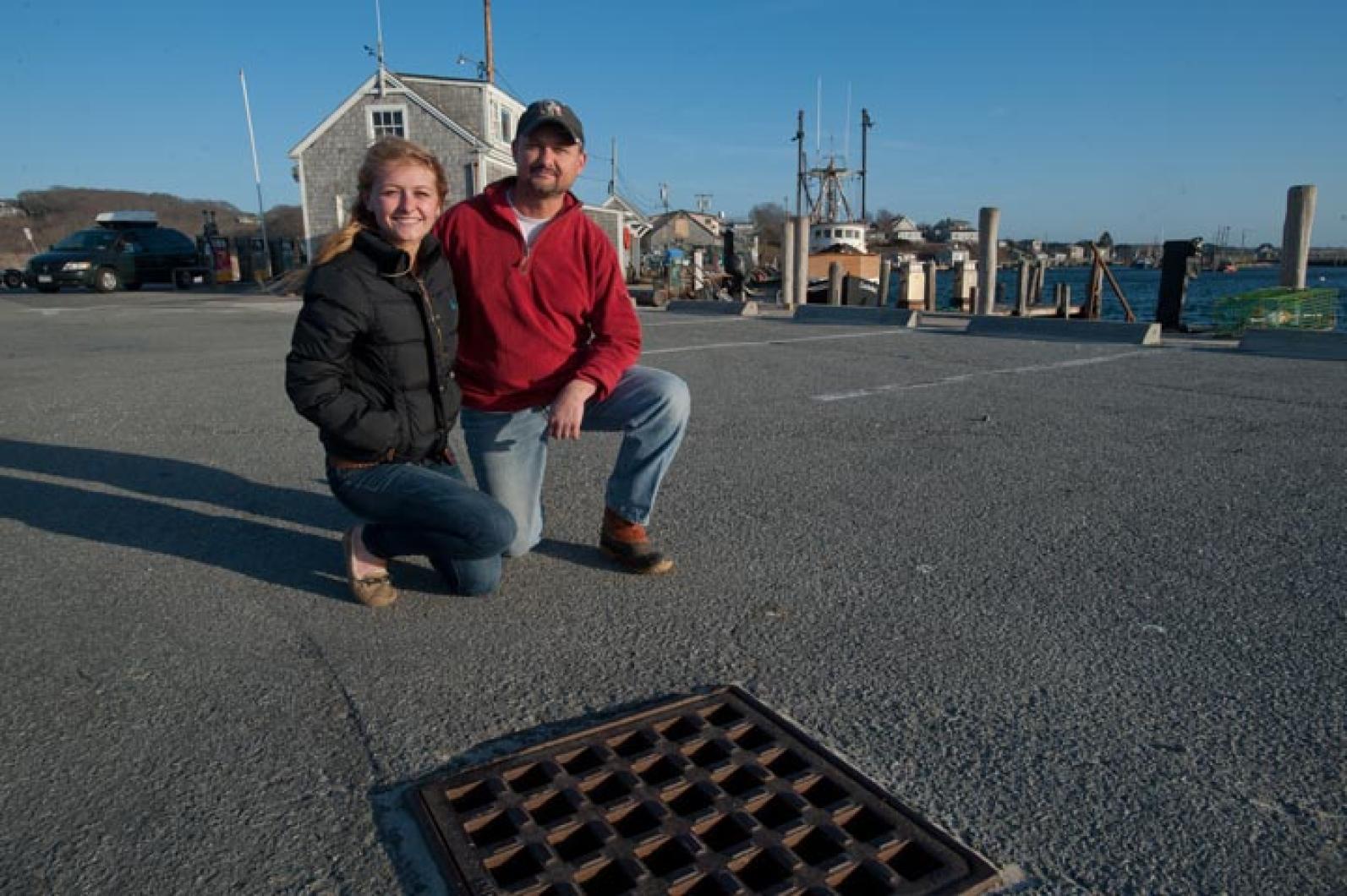The waters around Menemsha Pond are a bit cleaner today thanks to the efforts of a regional high school sophomore, Isabel Smith, of West Tisbury, who was scouting for a science fair project she could do last month. Miss Smith did a project on Creating the Most Effective Catch Basin that is already yielding some real-world results.
In collaboration with the Wampanoag Tribe, the Town of Chilmark, Miss Smith has solved a problem in the Menemsha parking lot catch basin that will significantly reduce the amount of hydrocarbons that may leach into the harbor whenever it rains. Plus she got some accolades for her efforts at the 13th annual science fair held on Feb. 6. She was one of 233 students who participated in the science fair.
The catch basin at the Menemsha parking lot has a pipe that runs straight into the harbor. With help and support from the tribe and the town, she was able to put a device inside the catch basin that will hold back the oil, gasoline, and other hydrocarbon materials. The device, called a snout, was donated by Best Management Products Inc., based in Connecticut, and is valued at $500. It was installed by her father, Robert Smith, of Walter Smith Plumbing and Heating in Edgartown.
Miss Smith said the idea for the project came out of a conversation with Bret Stearns, director of the Wampanoag Tribe of Gay Head (Aquinnah). Last year he had given her some help on a project involving testing soda for mercury.
Protecting Menemsha Pond and the surrounding waters was already on her radar screen, and it was on the radar screen of Aquinnah and Chilmark and the tribe. She said she wanted to do something to cut pollution. “I hate pollutants,” she said.
“The beauty of this project is so simple,” Miss Smith said. Her project was not only to show how the mechanism works but demonstrate its effectiveness. Early in the project she took a water sample at the catch basin and had it analyzed at the Wampanoag Tribe Environmental Laboratory at the hatchery in Aquinnah, confirming that there were hydrocarbons in the basin.
Then, through water sampling and inspection, she assembled a model of how the catch basin would work,
“The principle is that oil floats. Hydrocarbons float on the top. The plastic exhaust in the catch basin only lets water well below the surface exit out,” she said. “The hydrocarbons floating on the surface are not allowed to pass through the exit pipe.” The hydrocarbons will eventually attach themselves to the sediments at the bottom of the catch basin, and are cleaned out once a year.
Miss Smith said that the catch basin was a perfect project to undertake, because of its proximity to both the large parking lot and a nearby gasoline station. Because of “the slope of the parking lot, everything goes right into the catch basin,” she said.
“Any vehicle that is parked in the lot, dripping oil; when it rains, it goes into the catch basin,” Mr. Smith said. For the father and daughter, this was a project they both could do together. “I am no scientist,” Mr. Smith said. “The system is the same that works in a septic system. You have a pipe that takes water out of the tank, so that solids don’t go into the leaching field.”
Daughter and father have high praise for the help they got from Mr. Stearns. “We say thanks to Bret Stearns and his team at the lab,” Miss Smith said. “We would never have been able to test the huge amount of hydrocarbons in the water,” she said.
For her efforts, Miss Smith got recognition at the science fair—a special, top award on water quality from the Friends of Sengekontacket, a group advocating for cleaner waters in Sengekontacket Pond. She received the Martha’s Vineyard Surfcasters Association Award for a project that focuses on awareness and understanding of our marine environment. She shared a third place in Engineering Design with another student.
Miss Smith said she enjoyed doing her science project and hopes to make a career in science, maybe biochemistry. “I am definitely interested in science,” she said.
Mr. Stearns has high praise for Miss Smith for taking the initiative. This was a great example, he said, of how a young person can make a change and learn something along the way.







Comments
Comment policy »